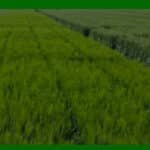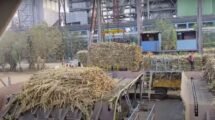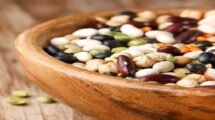Farmer income increased by 1.3-1.7 times from FY18 to FY22 – SBI Research report.
According to an SBI Research analysis, farmer income increased by 1.3-1.7 times from FY18 levels on average in FY22, while grain exports increased by more than USD 50 billion.
Farmers’ income more than doubled in several states (such as soyabean in Maharashtra and cotton in Karnataka) from FY18 levels in FY22, while it climbed 1.3-1.7 times in all other situations.
Farmers farming cash crops have seen a greater gain in revenue than farmers growing non-cash crops. Soumya Kanti Ghosh, the chief economist, stated in a detailed study published on Sunday.
According to the research, this has resulted in an increase in agriculture’s GDP contribution to 18.8 percent from 14.2 percent. This increase was partly caused by the decline in the industrial and service sectors’ contributions to the economy as a result of the pandemic’s fatal second wave.
However, the study is quiet on the enormous drop in the costs of spices such as black pepper, cardamom, clove, and cinnamon, as well as natural rubber. Also Read | SBI and Adani Capital inked an agreement for co-lending to farmers.
In addition, the report, which is based on key farming states such as Maharashtra, Rajasthan, MP, UP, Karnataka, and Gujarat, among others, notes that allied/non-farm income increased by 1.4-1.8 times in the majority of states in tandem with farm income during this period, corroborating the trend in the 77th National Sample Survey that said source of farmers’ income has become increasingly diverse apart from crops.
This also meant that there were no large disparities in economic inequality in the hinterland at this time. The study also calls for the government to introduce a livelihood credit card aimed at least one million farmers per year, as well as an omnibus credit guarantee fund for a ₹5 lakh crore Agri credit push.
The agrarian economy has undergone some tectonic shifts recently, emerging as the anchor for the broader economy during the pandemic’s tumultuous days, according to the report, adding that while the economy contracted the most in FY21, at 6.7%, the farm sector grew, and the trend continued in FY22 as well. As a result, agriculture’s contribution of the country’s GDP has increased since March 2019.
Similarly, agricultural exports increased by USD 50 billion in FY22. Apart from policy support, the report attributes the growth to changes in eating habits and nutritional focus, which are aided by shifting socioeconomic and cultural patterns, ensuring upgrades/rotation in cropping patterns across the country even as food security becomes increasingly important to a growing population with diverse demographics.
Another key driver has been the consistent rise in minimum support prices (MSPs), which are more matched with market-linked pricing.
MSPs have climbed 1.5-2.3 times since 2014, playing a critical role in assuring higher prices for farmers and leading to optimal price discovery. This has also encouraged farmers to progressively transition to crop types with higher yield/value.
Nonetheless, despite great publicity and political support, state agricultural loan exemptions have failed to provide relief to targeted clients, destroying credit discipline in certain geographies and making banks/financial institutions hesitant of future lending.
Between 2014 and March 2022, just approximately half of the 3.7 crore eligible farmers received the loan waiver money, however, in other states, more than 90% of farmers received the debt waiver sum.
Another tool in the Kisan credit card (KCC) plan has assisted in bringing a significant number of farmers into the purview of a formal credit mechanism at a subsidized interest rate.
There are 7.37 crore active KCCs; nevertheless, current regulatory guidelines enable KCC renewal every year with full repayment of principle and interest, as opposed to other loans where interest servicing suffices for renewal.
Renewal of KCC loans with repayment of both principle and interest alone entitles the farmer to interest subvention and an annual increase of 10% in the ceiling.
Given that each review might take up to 45 minutes, banks may have to spend a total of 23 lakh man-days each year to complete this procedure, which could otherwise have been utilized for new agricultural financing.
As a result, certain drastic changes are required, such as increased use of technology, such as making it app-based through digital channels to enable timely review and renewal policies. Also Read | Doubling farmers’ income is govt’s top priority, keeping promise by FY23: Goyal.
In addition, the government may consider launching a livelihood credit card that includes a multi-purpose loan covering all of a rural household’s activities for ease of doing KCC, targeting 1 million farmers, to begin with to further reinvigorate rural demand, or forming a comprehensive omnibus credit guarantee fund trust for Agri & allied sectors to act as a credit accelerator and ensure coverage of all new Agri loans.
According to him, this program alone may generate an extra ₹ 5.25 lakh crore in farm loans with just an incremental capital need of ₹11,320 crore and minimum fiscal assistance of ₹6,450 crores during a five-year period ending in 2027.
The average monthly income of agricultural families grew by 59% to ₹10,218 in the six years to FY19, according to the National Statistical Office’s (NSO) condition assessment of agricultural households and land and animal holdings in rural regions. PTI MR BEN MR MR


















Add Comment